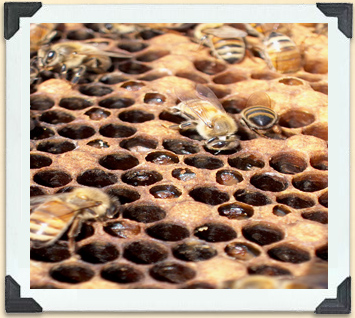Life in a Hive

Worker bees act as nurses, feeding larvae in brood cells.
© Agriculture and Agrifood Canada, Beaverlodge Research Farm
Nursing and Serving
Worker bees must also care for the developing larvae. They feed them a combination of honey, pollen and royal jelly. The worker bees check on each larva over 1 000 times per day.
And because the queen and drones can't look after themselves, worker bees must care for them, too. They feed them, groom them and remove their body waste from the hive. They even encourage the queen to keep laying eggs.





